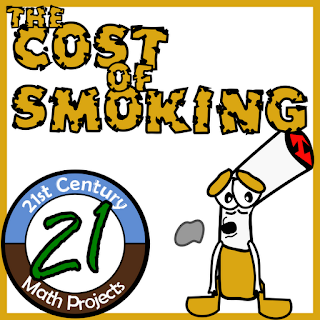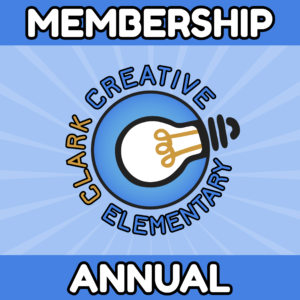 |
| Kick Butts, Teachers! Kick Butts Hard. |
Utilize tobacco use in an investigation of number sense, linear functions, and scatterplot in this 21st Century Math Project. Students will find out the startling truth behind the amount of cigarettes a smoker may use in their lifetime, the financial cost of the habit (including inflation), as well as the foretold effect on their health. I’ve never had students more engaged calculating math problems! The results of this project can have a lifelong impact on a learner (I’ve seen it)… the best part is they are discovering this on their own.
Name: Cost of Smoking – STEM-based Health Project
Suggested Grade Level: 7-12 (Algebra 1 skills)
Math Concepts: Patterns, Linear Equations, Percents, Operations and Scatterplot
Interdisciplinary Connections: Health, Personal Finance
Teaching Duration: 3-5 Days (can be modified)
Cost: $6 for a 24 page PDF (1 project with answer key)
PDF Version: Cost of Smoking @ TPT
The Product: A PSA in which students use data they have calculated in their packet to persuade a target audience (elementary kids, smokers, Latinos, etc.) to stop or avoid smoking.
 |
| How am I supposed to quit smoking, have you seen my 7th Period? |
Kick butts with the 21st Century Math Project that started it all. My parents were smokers. When I got to middle school I realized how much money they were actually spending on those stupid little cigarettes. They’d each burn through a pack a day without blinking. Money was tight, I didn’t understand it. Learning about the impacts on their health made me completely astonished. Why would anyone spend some much money to do this to themselves? I convinced myself my best chance to get them to quit was to not just tell them they were bad for them, surely they knew, but I thought I’d point out how much money they would save and showed them what other things we could use the money for. Eventually, they did decide to quit. Why, I’ll never know.
Now as a sixth-year high school teacher, I can better empathize with things like “stress”, I still was at a loss as to the amount of money people spent on the things. In college, project-based learning was emphasized heavily. I pitched an early idea of this project to a class. Developed an idea and took it with me into my first year. While that draft of this project was rough, I still distinctly remember kids being floored by the numbers. Kids want to show their moms. Perhaps a few decided to avoid smoking. Nobody will ever know.
I have used this project in pretty much every class. I can see it being done as a 6th grade enrichment project. I have used it in the first week of Pre-Calculus to assess skills and encourage a take action approach to mathematics. Chances are EVERY student you have, knows someone who smokes. Who knows what affect this project may have on them.
 |
| What about weed? |
I set up the project to up for a student to calculate data for two states. When I do it, every student does our state, Ohio. This way, when I model difficult problems, we can all work on a problem that is assigned. In many cases, students will do the same problem type twice, increasing repetition and practice. It will also allow students to do a side-by-side comparison. Why are tobacco prices in Virginia so much cheaper than in Massachusetts? This leads to some impromptu discussion.
Every year a student stands to ask about data from other countries. I’d be happy to do it, but it’s difficult to pin down these numbers. That and the prices around the world are also typically much LOWER than in the United States. It’s just something I’ve avoided. I don’t want students to think they should go buy cigarettes from Mexico instead of not smoking at all! 21st Century Math Project Mind Control! A student will also likely ask about marijuana. Sometimes I bring up Starbucks and other daily wasteful purchases. No offense Starbuckers.
 |
| How might our class leverage this information to help the global community? |
While it certainly is optional, I have always had interesting PSAs for this project. I have the students choose a specific target audience. Either an age group, ethnic group, etc. And it needs to be relevant to the state that they have chosen. It’s a great opportunity for students to use mathematics to take action. Often I have used this project as a before Winter Break thing so students could create their PSAs over break.
EXTENSION: The wonderful thing about asking your students to create PSAs is that in many cases this is web-based and (depending on your school district, image rights, etc) you may be able to share these PSA with the community. Nonetheless perhaps there will be some bold students to speak out against tobacco!
Mathematical Rigor, Real World Relevancy, and 21st Century Swagg. The three keys to math project success!


